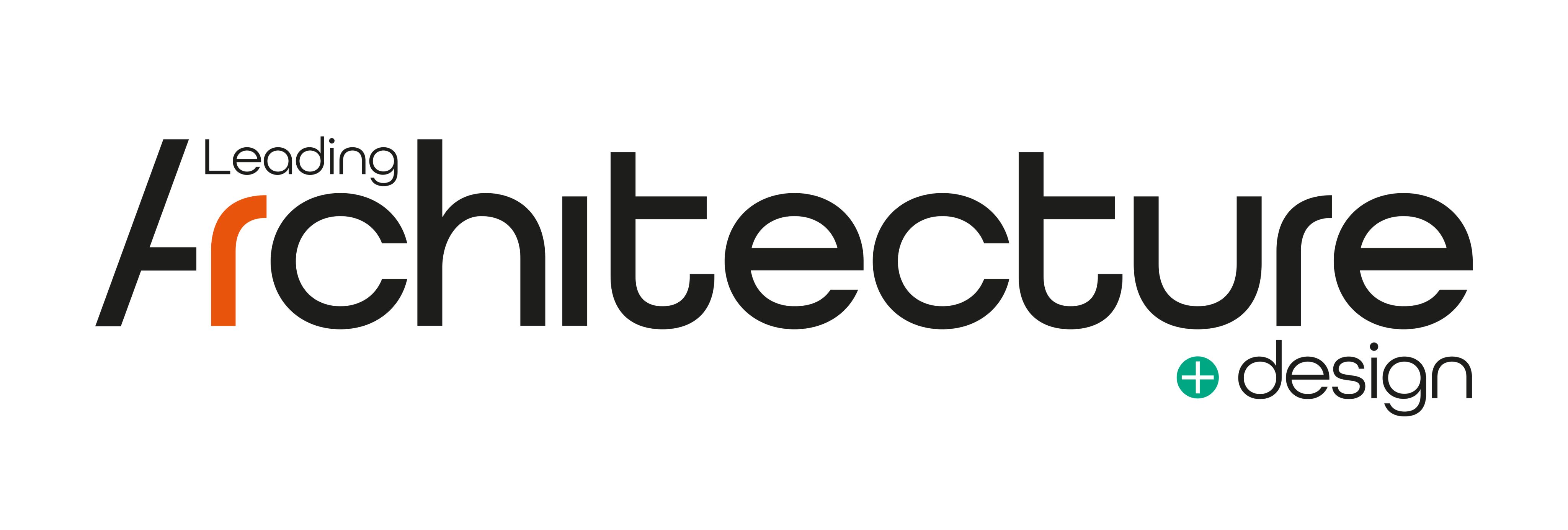Think Pink
The Flamingo, a playfully and curvaceously sculpted apartment building in Sea Point designed by Robert Silke & Partners for Signatura, presented an opportunity to sidestep convention and transcend the norm for residential developments.
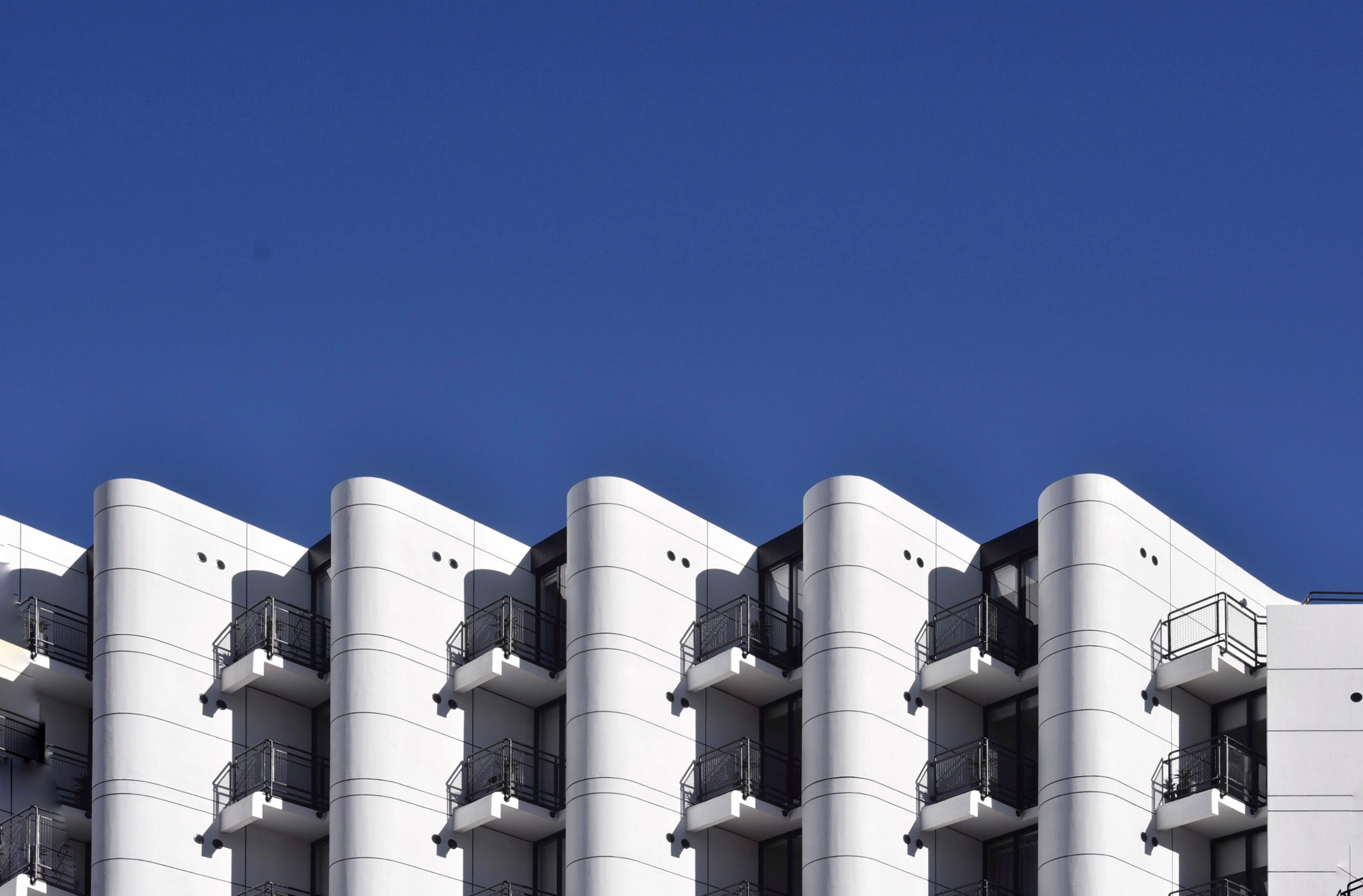
The Flamingo, a nine-storey, 71-apartment development in Sea Point, Cape Town, is an architecturally arresting addition to the neighbourhood. Its curvaceous, sculpted form takes inspiration from the flamboyant tropical modernist architecture that characterised coastal resort cities like Miami, Rio de Janeiro and Honolulu in the mid 20th century. Architect Robert Silke, founder and director of Robert Silke & Partners, who designed the building, notes, however, that it also takes more than a little inspiration from the famed Bauhaus architecture of Tel Aviv, with perhaps a dash of Futurism. He calls it, “Bauhaus on heat”.
The circumstances that lead to this audacious departure from the developer norm are multifaceted. The wide, shallow shape of the site allowed full frontage to 55 out of the 71 apartments. The presence of a tall building directly in front of it, however, meant that for all but 16 of the forward-facing units, sea-facing views were obstructed. The site nevertheless offered dramatic views across Fresnaye, all the way up the slopes of Signal Hill and culminating in Lion’s Head from all floors, from the first to the eighth.
Silke explains that the architects were able to ‘crank’ the front-facing units 45 degrees, with balconies staggered to maximise personal privacy while framing the views. Floor-to-ceiling windows and sliding doors maximise the blue sky and sunlight above the mountain silhouettes – a small design detail that makes an outsized difference to the quality of the outlook. This decision also manifests in the façade in its distinctive wave-like forms.
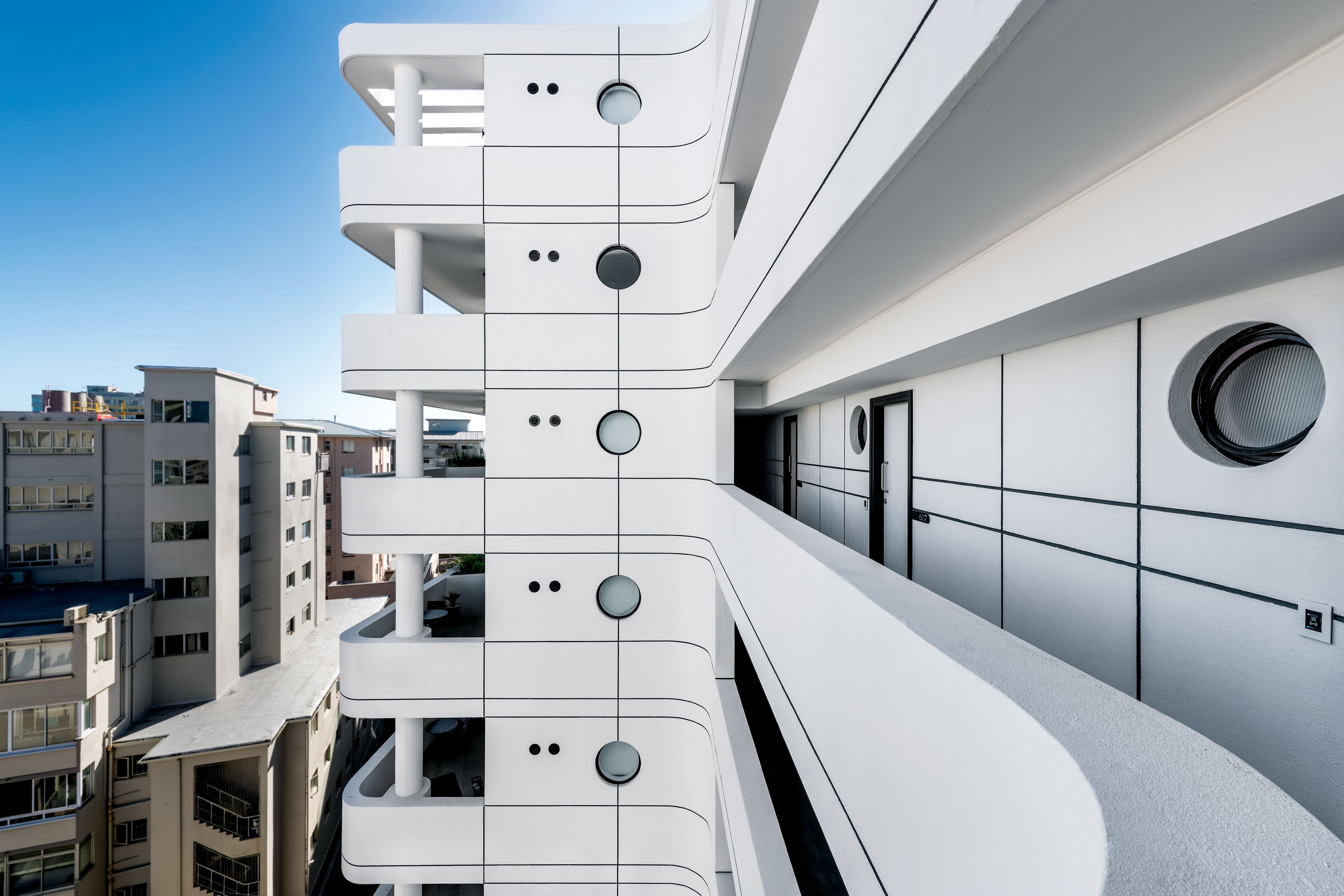
The apartments are small but intricately designed, with individual quirks and idiosyncrasies intended to maximise space and bring delight to their inhabitants. Some units have super-sized circular porthole windows framing Lions Head, while other windows have frameless corners facing the sea, in keeping with the playful and optimistic aesthetic of the building’s exterior.
The choice of white walls, floors and joinery bounces ample natural light into and around the rooms. Luxurious details in the form of elegant black metal handles, edgings and trims on the joinery and, more unusually, solid Sardo granite countertops that seamlessly fold up into matching granite splashbacks in the kitchen, bring a dimension of high-end tactile luxury to key touchpoints. All this sophisticated monochromatic restraint is juxtaposed with a pastel flamingo pink feature wall in a joyful flourish.
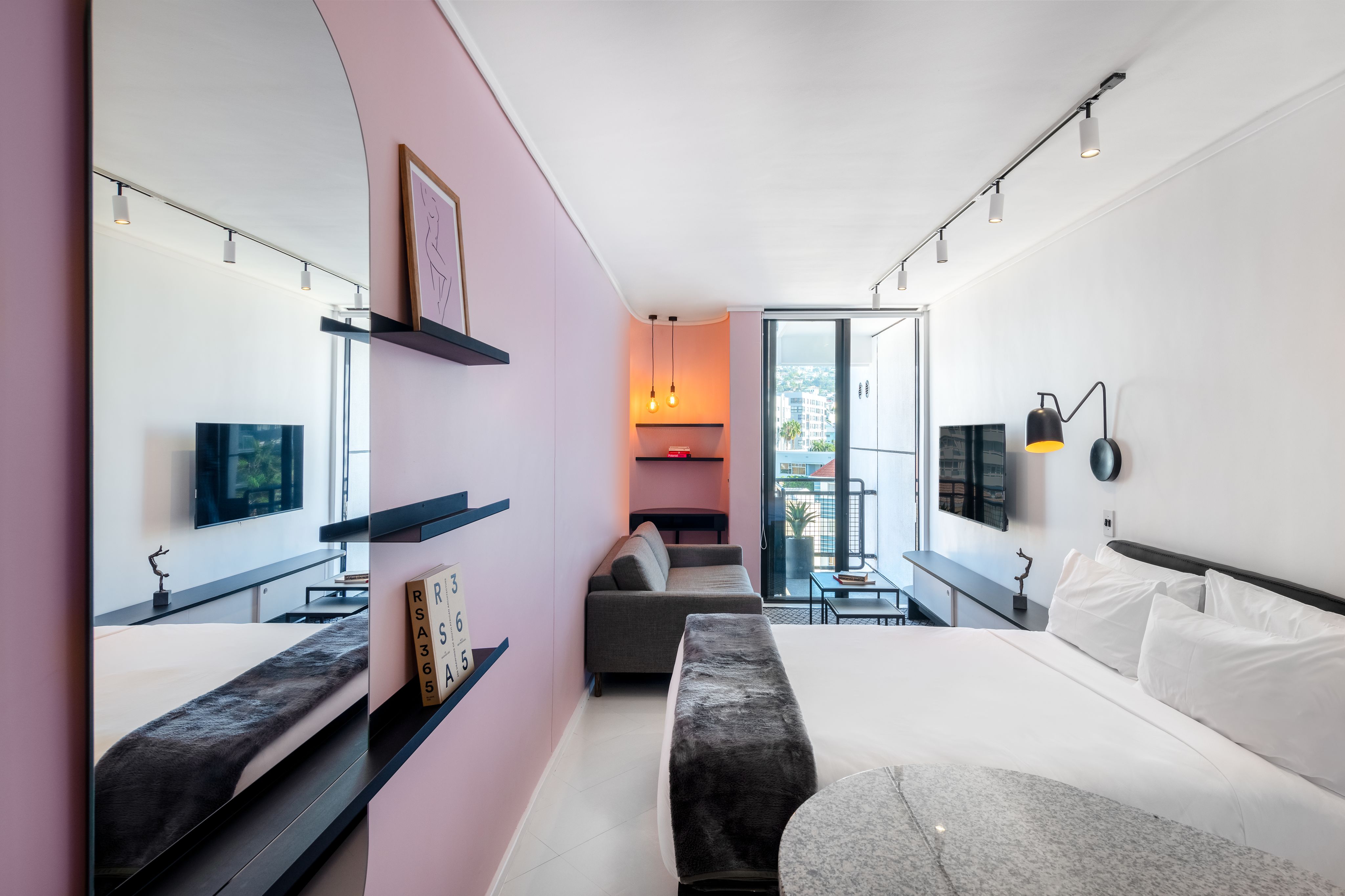
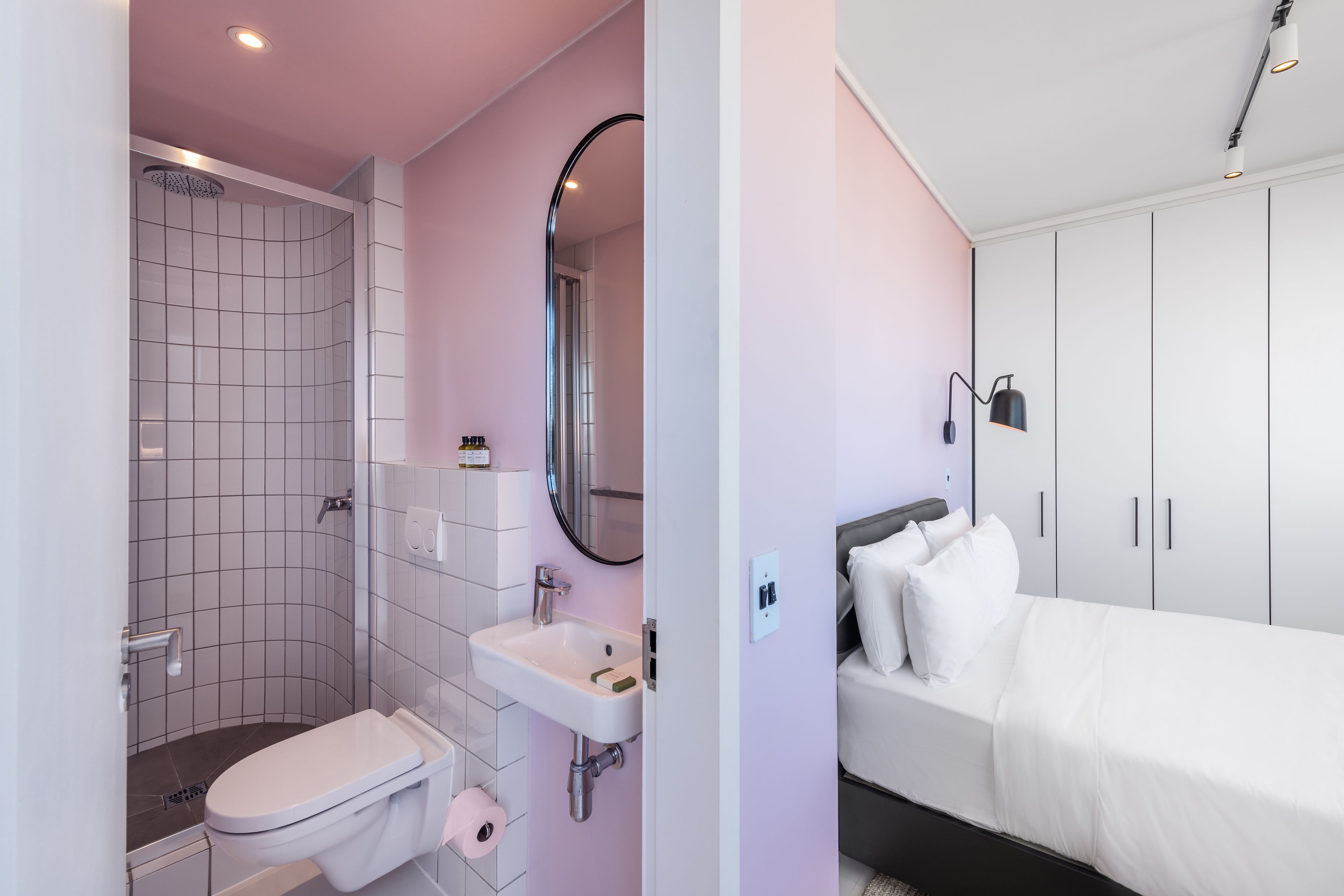
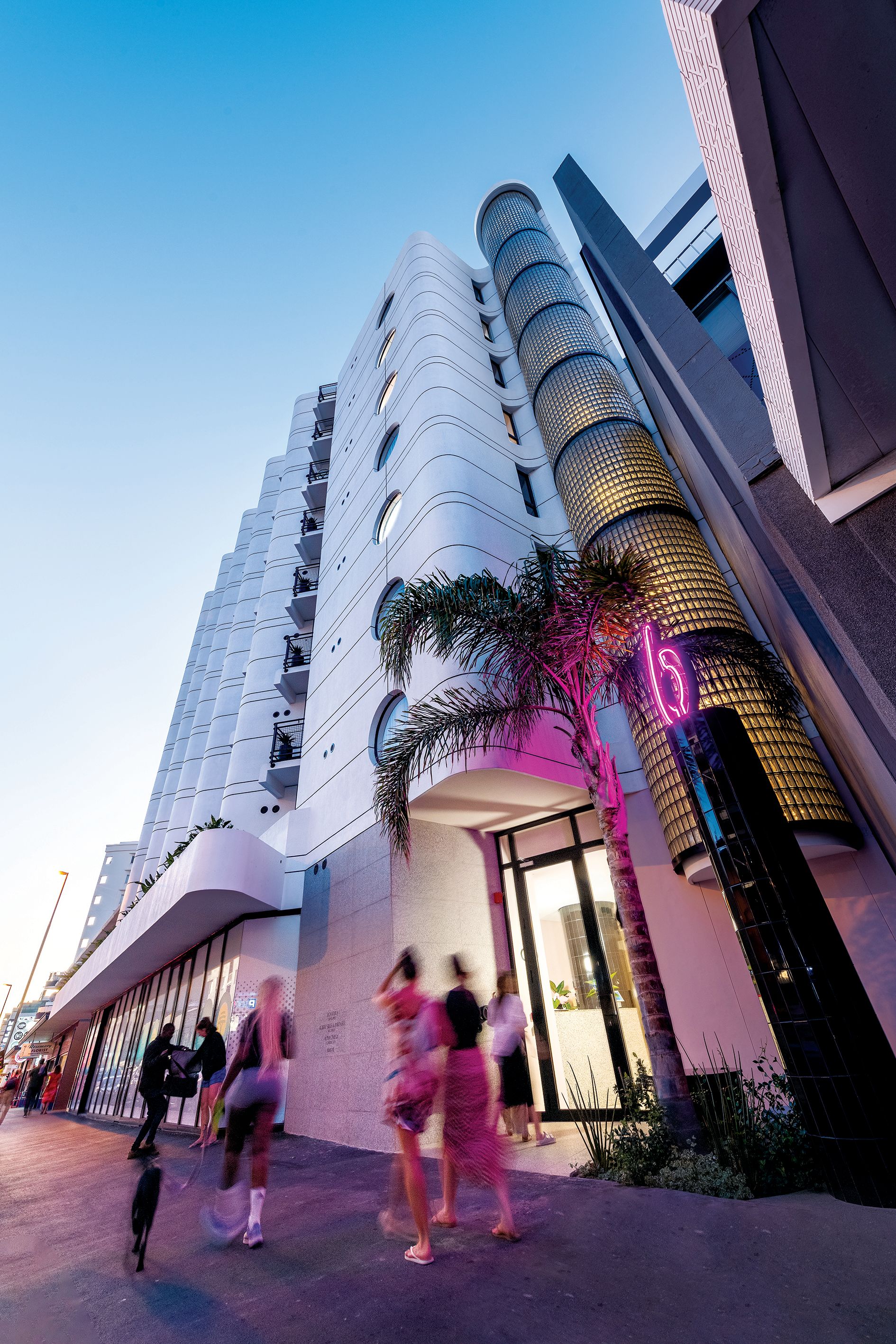
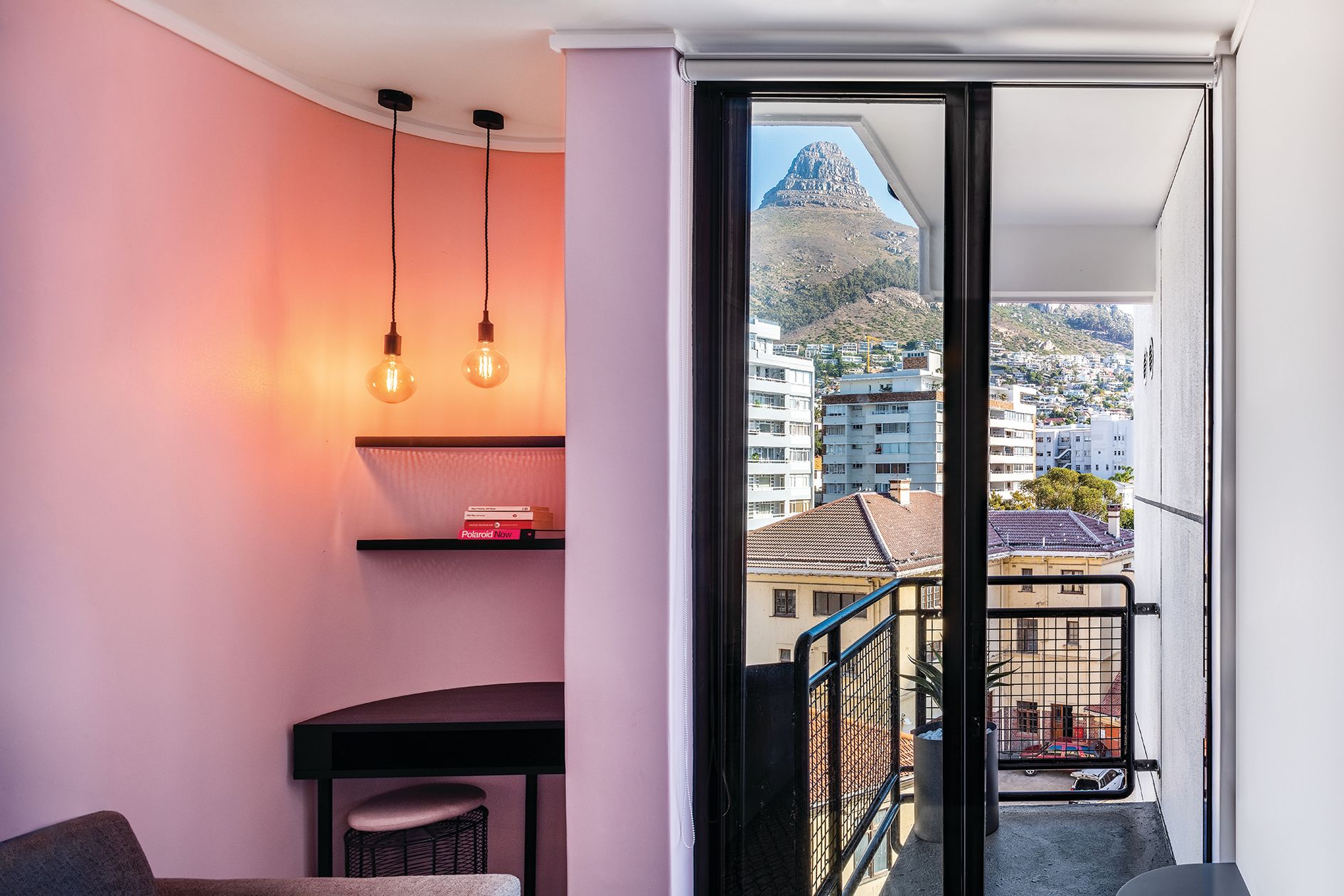




Similarly, the shared public spaces are well-finished and compact, with solid stone floors in all lift lobbies, as well as the main entrance lobby. What’s more is there’s a dramatic and generous rooftop sundowner view terrace available to all residents.
Silke explains that several economic and circumstantial factors enabled The Flamingo’s departure from the usual requirements of residential developments. Firstly, it wasn’t necessary to include parking. From the developer’s point of view, this node in Sea Point offers easy walking-distance access to everything from shopping, dining, entertainment, access to local attractions such as the promenade and public swimming pools, and even employment. Access to a high-quality, reliable public transport system further negates the necessity for a car.
Secondly, because of the City of Cape Town’s recent drive to reduce reliance of cars, no special permission was required to develop residential units without a parking garage. This meant that the site, which would not have been able to accommodate a parking garage, was spatially viable for apartment development.
“It was a total game changer from a design point of view,” says Silke. Without the design constraints that come with reconciling the structure of the apartments with an orthogonal parking grid, which usually manifests in a rectilinear layout, the architects found themselves with an unusual degree of formal freedom, which allowed unusual and distinctive design elements, ranging from the 45-degree angle of the apartments to the curved features on the façade.
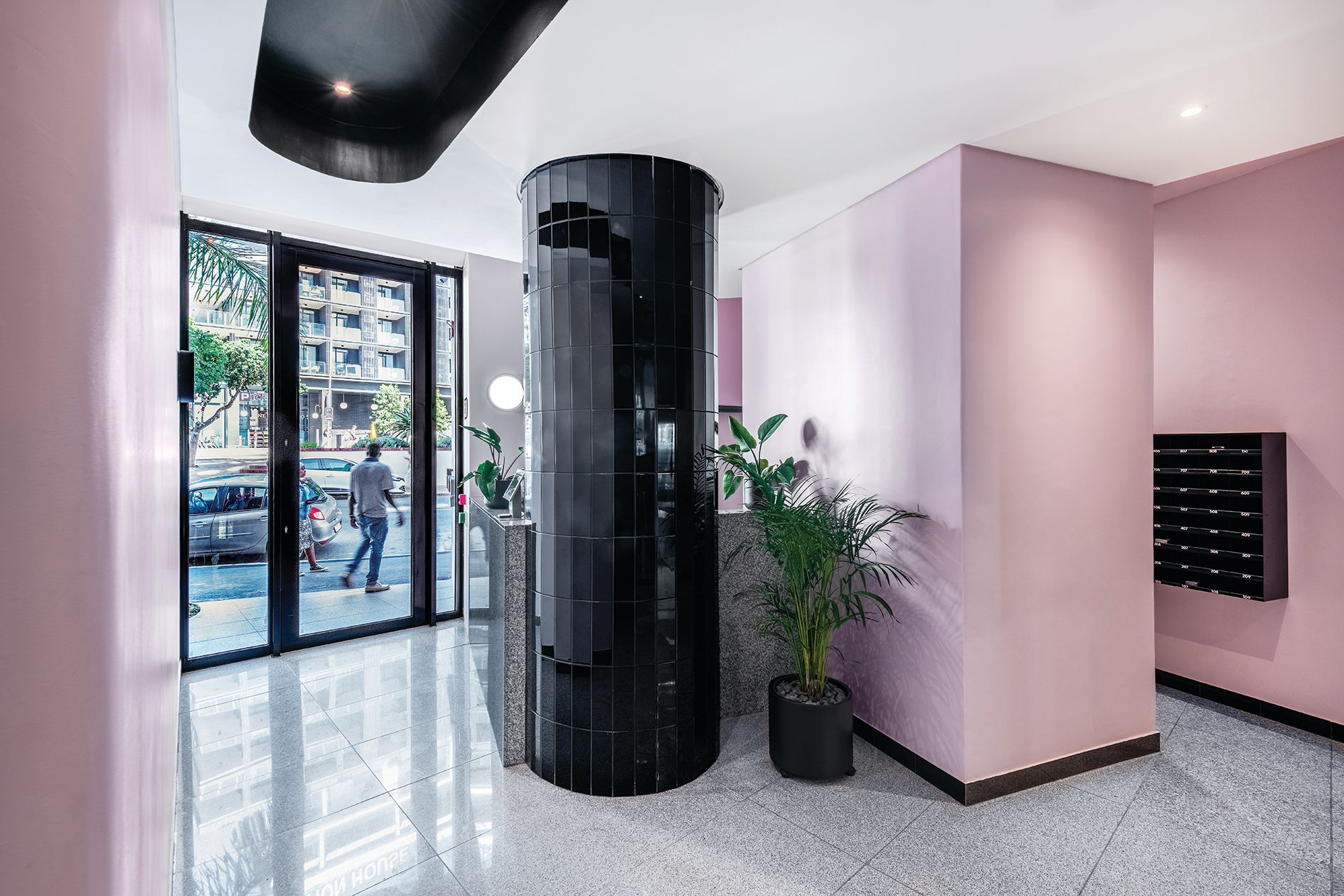
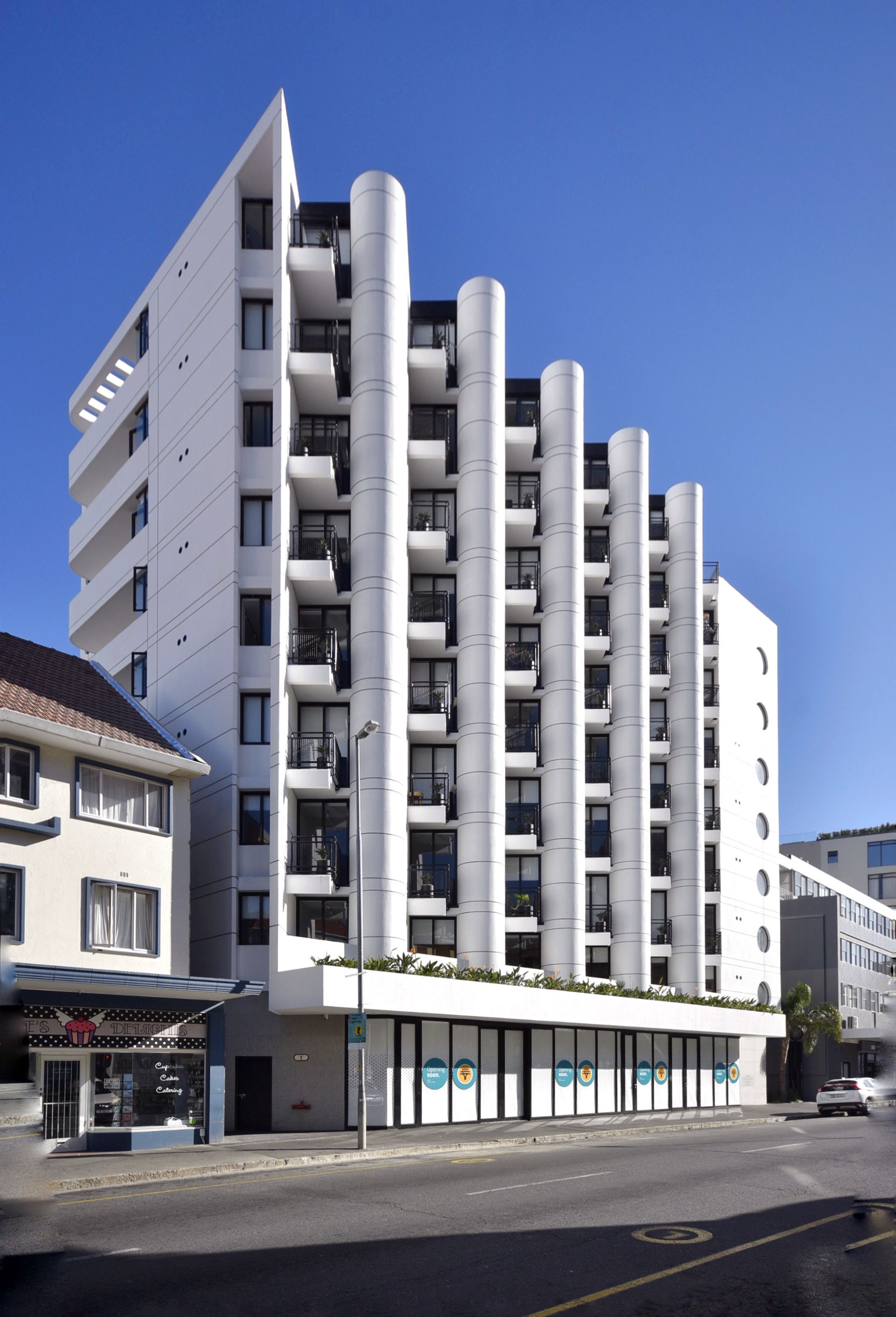
The historic moment also played a significant role in the design and development concept. “It was our lockdown project,” Silke recalls. Designed in a time of social, economic and political crisis, the choice of small apartments allowed the developers to offer relatively affordable properties in a prime location.
The audacity of proposing a property investment amidst the uncertainly of the pandemic, however, necessitated an offering that was forward-looking, disruptive and “even unsettling”. But despite the austerity of the times and the modesty of the size of the apartments, Silke says the market proposition was essentially: “This is going to be a lot of fun”.
Thus the lack of formal seriousness, the future-focussed design language offers a sense of optimism free of overbearing luxury or unseemly ostentation. Even details such as the glass-brick curtain walls surrounding the cylindrical fire escape, while superficially appearing to be a design flourish, is curiously economical. It doubles or even triples its function, making a virtue of a necessity and using the requirement for always-on lighting to create a beacon for the building – a kind of architectural signage or branding and a contribution to the public realm of the street.
The Flamingo is not only a dazzling design response to a very particular place and time, but harnesses the disruption to forge a proposal for a way of living, a design approach and an attitude that ushers in what seems like a new era of design possibility.
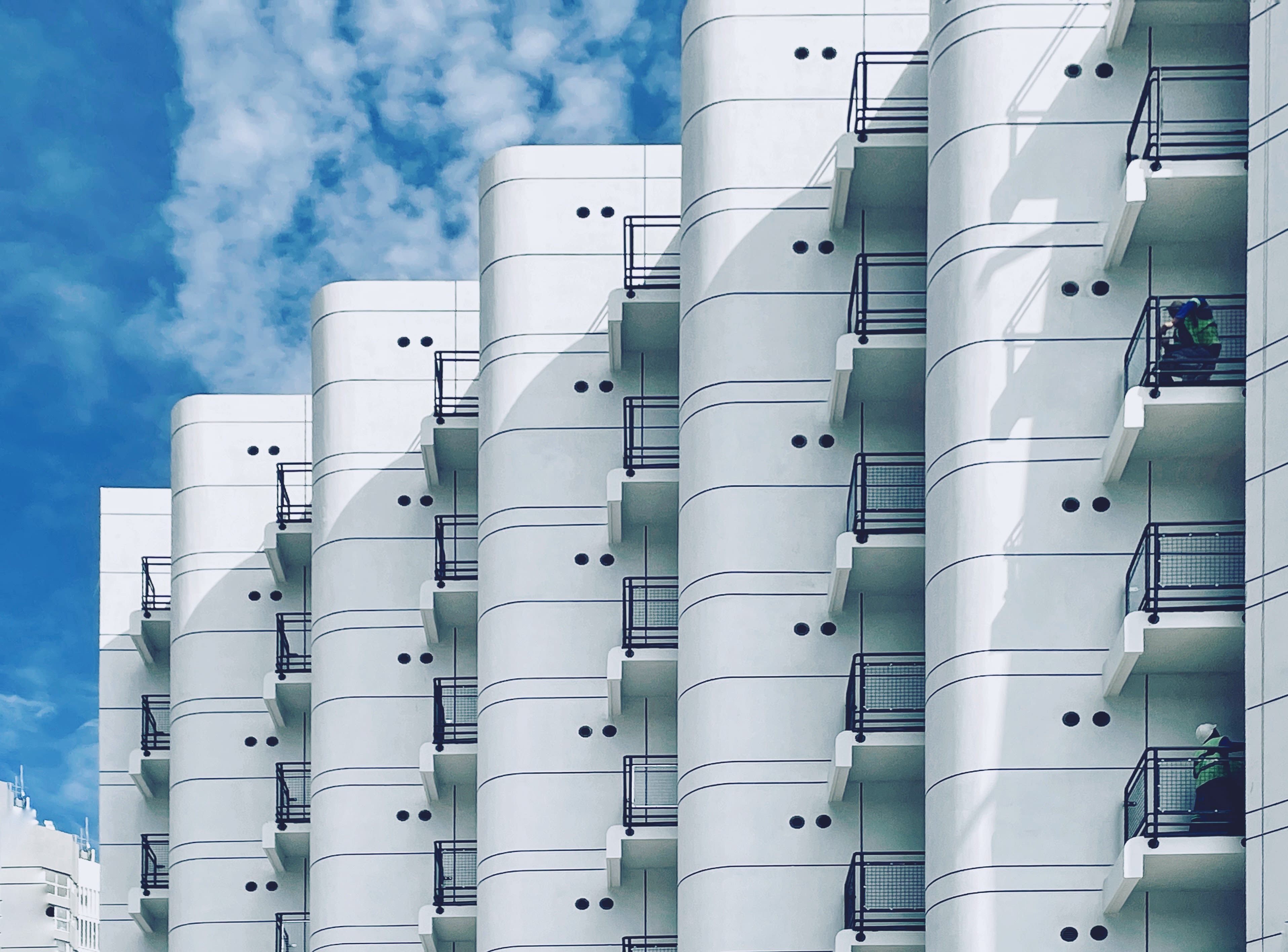
Professional team
CLIENT: Signatura ARCHITECT: Robert Silke & Partners INTERIOR DESIGNER: Robert Silke & Partners FURNITURE & STYLING: Weylandts Studio QUANTITY SURVEYOR: Kahts & Sparks STRUCTURAL ENGINEER: S&T Consulting Engineers MECHANICAL, WET SERVICES, FIRE ENGINEERS: SolutionStation TOWN PLANNER: D&S Planning Studio HERITAGE CONSULTANT: Johan Cornelius LAND SURVEYOR: DHALE CONTRACTOR: Alpha Omega Construction
Leading Architecture + Design is South Africa’s leading showcase of the country’s most exciting and innovative architectural and design projects. This bimonthly magazine speaks directly to South Africa’s architects, interior designers, engineers, construction companies and property developers. It also offers readers a showcase of the latest innovations, products and developments in the field of architecture and its related industries. The print edition of Leading Architecture + Design is complemented by a vibrant website, fortnightly newsletter and social media platforms.

